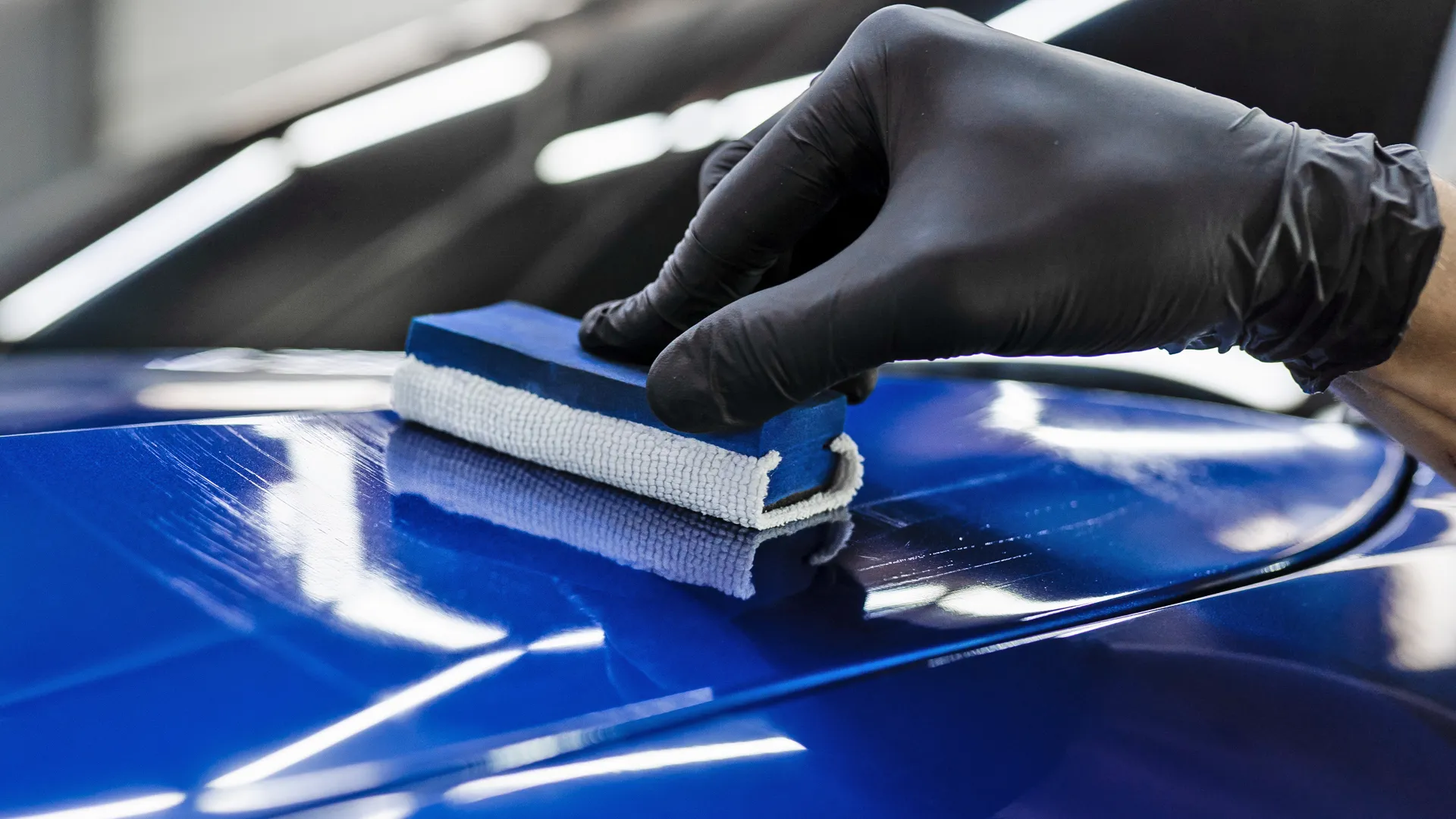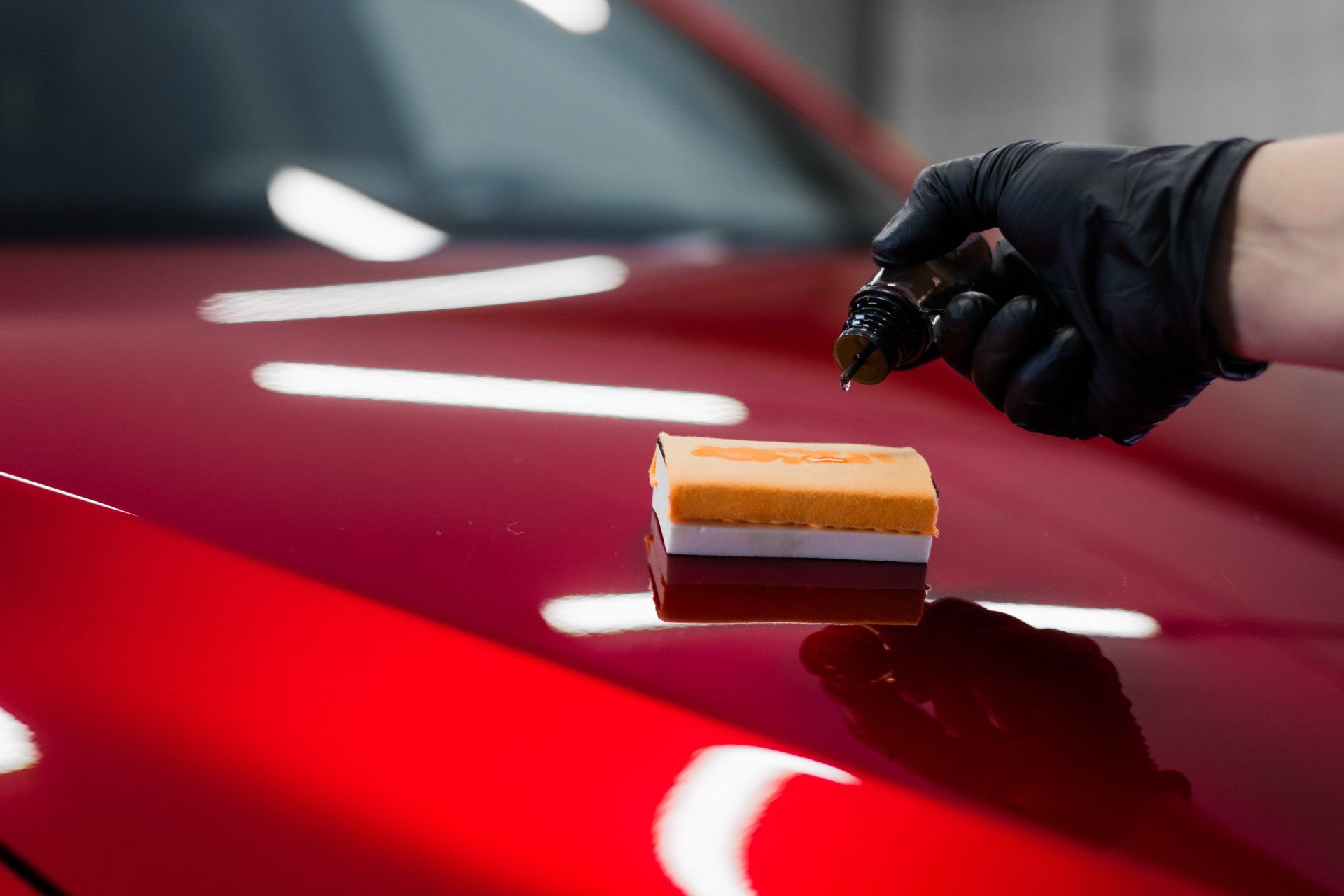How Ceramic Coating Newark protects against scratches
Wiki Article
Discovering the Science Behind Car Ceramic Coating and Its Protective Qualities
The science of car ceramic coating presents a remarkable research study in sophisticated vehicle protection. Composed primarily of silicon dioxide and polymers, these finishings develop a robust bond with car paint. This communication enhances longevity against environmental threats while supplying hydrophobic benefits. The ins and outs of how these finishings work and their long-term advantages remain less recognized. Ceramic Coating Newark. Unboxing these details discloses why ceramic finishes are ending up being a favored choice for vehicle treatmentWhat Is Ceramic Coating?
Ceramic coating is a liquid polymer that chemically bonds to the surface of a vehicle's paint. This advanced safety layer boosts durability and provides exceptional resistance to ecological elements. Unlike typical wax or sealants, which provide short-term security, ceramic layers create a lasting shield that can endure extreme problems such as UV rays, acidic pollutants, and extreme climate. When applied properly, the coating develops a hydrophobic surface, creating water to bead and slide off, which helps in preserving the automobile's cleanliness. In addition, it provides enhanced gloss and deepness to the paint, making the vehicle show up even more polished and dynamic. The application process typically entails comprehensive surface preparation, including cleaning and sprucing up, to assure peak bonding. Because of this, ceramic finishes are becoming progressively prominent among car lovers and those seeking to secure their investments, assuring to preserve the automobile's visual charm while reducing the frequency of maintenance.The Make-up of Ceramic Coatings
The elaborate formulation of ceramic finishes mostly consists of silicon dioxide (SiO2), which is derived from all-natural sources like quartz and sand. This essential component gives the structure for the coating's toughness and protective high qualities. Along with SiO2, ceramic finishes usually consist of various polymers and additives that boost adhesion, adaptability, and resistance to environmental elements. These compounds function synergistically to produce a robust obstacle against pollutants such as dirt, chemicals, and UV rays.Furthermore, some solutions integrate titanium dioxide (TiO2) or various other nanomaterials, which can enhance the coating's hydrophobic buildings, causing enhanced water repellency. The specific composition can differ substantially amongst makers, impacting performance and durability. Inevitably, the mix of these aspects finishes in a protective layer that not only boosts the visual allure of vehicles however also serves to extend their lifespan by securing the surface area from potential damages.Just How Ceramic Coatings Work
Comprehending just how ceramic coverings function includes discovering their chemical structure, which adds to their protective qualities. The application process is important for achieving suitable outcomes, while durability and durability aspects establish the coating's effectiveness over time. With each other, these aspects highlight the benefits and efficiency of ceramic layers for car defense.Chemical Make-up Explained
While lots of car proprietors seek lasting protection for their cars, the chemical structure of ceramic finishings plays a vital function in their effectiveness. These coatings primarily include silicon dioxide (SiO2), which is obtained from natural minerals. This substance develops a solid bond with the car's paint, creating a long lasting, safety layer. In addition, several ceramic coverings have titanium dioxide (TiO2), improving their hydrophobic homes and resistance to UV rays. The existence of polysiloxanes can further enhance versatility and longevity. Together, these aspects add to the coating's ability to ward off water, dust, and impurities, while likewise giving a high-gloss coating. Recognizing this chemical structure assists car owners appreciate the robust security supplied by ceramic layers.Application Refine Overview
Using ceramic finishes involves a thorough process that ensures perfect bonding and protection for the automobile's surface area. Detailed cleansing and decontamination of the car's exterior are carried out to remove dust, grime, and previous waxes. This step confirms that the surface is complimentary from pollutants that can prevent attachment. Following this, the paint is typically brightened to improve quality and eliminate any flaws. When prepared, the ceramic coating is used in little sections using an applicator pad, enabling uniform protection. The coating is after that entrusted to heal, developing a strong chemical bond with the surface area. Correct curing times and problems are critical, as they verify the coating attains its maximum efficiency and protective qualities.Longevity and Sturdiness Aspects
Ceramic coverings are created to supply lasting protection via their innovative chemical make-up, which produces a robust obstacle versus ecological pollutants. The longevity of these finishes is affected by aspects such as the density of the application, the quality of the product, and the conditions under which the automobile is revealed. Top notch ceramic layers can last a number of years, resisting scratches, UV rays, and chemical discolorations. Correct upkeep, including regular cleaning and routine reapplication, can further boost long life. In addition, environmental variables like climate and direct exposure to toxins can affect the lifespan of the coating. Generally, when applied and kept correctly, ceramic finishings supply extraordinary durability, making them a prominent choice for car lovers seeking to preserve their lorry's look.Hydrophobic Qualities and Water Repellency
Hydrophobic residential or commercial properties are a trademark of top quality car ceramic finishings, significantly improving the automobile's surface efficiency. These coatings develop a molecular bond with the car's paint, resulting in a surface that repels water properly. When water comes into call with a ceramic-coated surface, it beads up and rolls off, reducing the amount of fluid that continues to be on the paint. This actions not just adds to a visually pleasing look but likewise lowers the build-up of contaminants such as dirt, crud, and road salts.The boosted water repellency results in much easier cleaning and upkeep, as much less effort is needed to remove unwanted compounds. On top of that, the hydrophobic nature of ceramic layers assists in stopping water places, which can mar the surface get more of uncoated surfaces. On the whole, the incorporation of hydrophobic homes in ceramic coverings plays a vital function in keeping the car's pristine appearance while simplifying upkeep.Defense Against Scratches and UV Damage
Car ceramic coatings use substantial defense versus scratches and UV damages. The scrape resistance system develops a durable layer that soaks up impacts, while the UV securing benefits help maintain the car's paint integrity gradually. With each other, these features add to a longer-lasting and aesthetically attractive finish.Scratch Resistance Mechanism
Using sophisticated innovation, ceramic finishings offer a durable shield against scrapes and UV damage, enhancing the durability and appearance of car surface areas. The scrape resistance device of these layers is credited to their distinct molecular framework, which forms a resilient bond with the lorry's paint. This bond produces a hard, safety layer that can take in influences and withstand abrasions. In addition, the smooth surface area of the coating minimizes rubbing, making it difficult for pollutants to adhere and trigger scratches. The chemical make-up of ceramic coatings typically includes nanoparticles that enhance the protective layer, additional improving its durability. Vehicles treated with ceramic layers exhibit considerably improved scrape resistance contrasted to standard wax or sealants, guaranteeing an excellent finish over time.UV Shielding Perks
The protective top qualities of ceramic finishes extend past scrape resistance to include substantial UV shielding benefits. These coatings create a robust obstacle that mirrors harmful ultraviolet rays, safeguarding the lorry's paint and underlying materials. Extended direct exposure to UV radiation can result in fading, oxidation, and damage of the paint finish. By including ceramic coatings, vehicle owners can efficiently alleviate these risks, maintaining the visual appeal find out this here and honesty of their cars and trucks. Additionally, the UV obstructing residential properties add to boosted long life, decreasing the regularity of repainting and maintenance. Eventually, the integration of ceramic finishings uses a detailed service for safeguarding automobiles from the harmful results of sunlight exposure, ensuring a sustained, vivid appearance gradually.The Longevity and Upkeep of Ceramic Coatings

Frequently Asked Questions
Can Porcelain Coating Be Applied to Any Type Of Kind Of Lorry?
Ceramic coating can be put on different types of vehicles, including autos, vehicles, and motorbikes. Nonetheless, surface area preparation and compatibility with particular products are crucial for perfect adhesion and performance of the coating.Exactly How Much Does Ceramic Coating Typically Price?
Ceramic coating generally costs between $500 and $2,000, depending upon factors such as automobile dimension, coating high quality, and professional application. The financial investment can offer long-lasting security and enhance the vehicle's look in time.
Is Expert Application Needed for Ideal Results?
The necessity of professional application typically depends on wanted results. Professionals typically assure correct surface area prep work and application techniques, causing ideal bonding and longevity of the coating, which might be challenging for inexperienced people to attain.Can Porcelain Coatings Be Eliminated or Fixed?
Ceramic finishings can be gotten rid of or repaired, though the procedure might need certain solvents or strategies - Ceramic Coating Newark. Correct removal is vital to avoid damage to the underlying surface, emphasizing the importance of specialist assistance for suitable outcomesExactly How Does Ceramic Coating Compare to Standard Wax?
The contrast between ceramic coating and standard wax discloses that ceramic finishes supply premium sturdiness, enhanced protection versus environmental impurities, and longer-lasting shine, while wax calls for much more frequent application and gives much less general resistance to damage.Report this wiki page